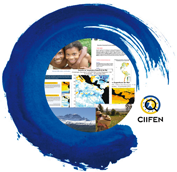Rainfall variability related to sea surface temperature anomalies in a Pacific–Andean basin into Ecuador and Peru
Abstract. The spatiotemporal modes of seasonal rainfall variability and their relation with sea surface temperature anomalies (SSTA 1.2 indices) are examined in the transition from the coastal plain towards the western Andes cordillera in southern Ecuador/northwestern Peru using instrumental records (1970–2000) collected from the Catamayo–Chira basin. A multi-criteria data analysis is conducted within different elevation ranges. The criteria involve rotated principal components, cross correlations and temporal changes of anomalies in rainfall quantiles.
The results confirm that SSTA 1.2 indices influence rainfall variability over the coastal plain (< 510 m a.s.l.) where forcing is dominant within December–May. The El Niño Southern Oscillation also plays a role inland of the coastal plain where a region of ENSO-like rainfall variability is found on the southeastern part of the basin (4°30'–5° S/79°15'–80° W) within March–May (MAM). This suggests that inland distance and elevation are only partial controls of ocean–atmospheric forcing up to ~ 1300 m a.s.l. Our analysis also provides evidence of the SSTA 1.2 indices influence in a large altitudinal range ~ 1400–2700 m a.s.l. confined to the southeastern basin. This region is found consistently perturbed by ENSO within MAM. We conclude that geo-morphological features of the southwestern Ecuadorian Andean ridges play a twofold role in the control of ocean–atmospheric forcing. They can modulate the atmospheric circulation, leading to a dissipation of the signal, or they might favor meteorological processes, leading to enhancement of orographic precipitation. This would explain the observed ENSO signals in instrumental records at locations as high as 2700 m a.s.l.






